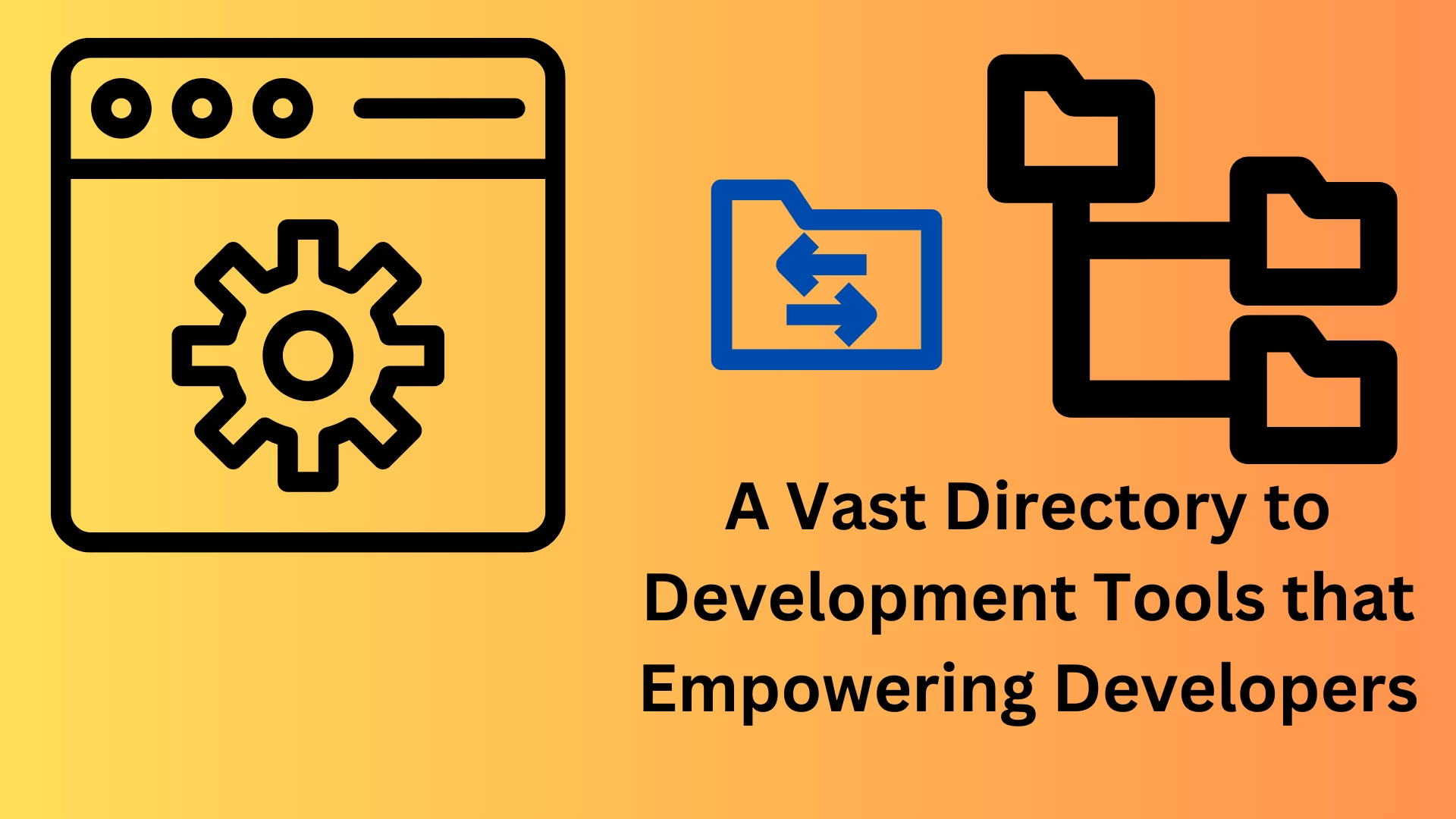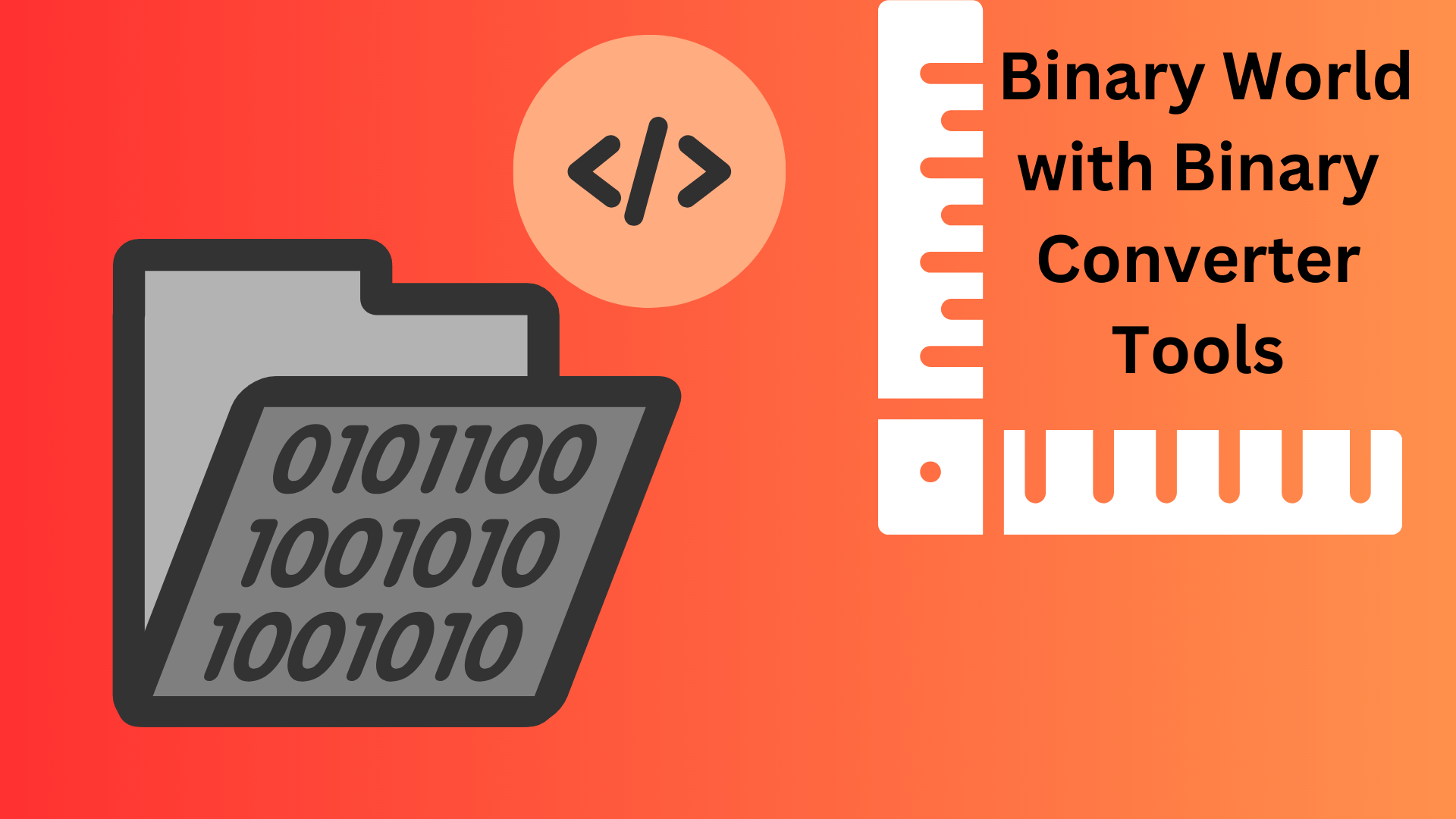
Directory to Development Tools
What is a Development Tool?
A Vast Directory to Development Tools that Empowering Developers
In the ever-evolving realm of software development, many tools have emerged, empowering programmers to craft innovative applications. And transform their ideas into reality. These tools are from code editors. And debuggers to test frameworks and version control systems. Provide a comprehensive arsenal to streamline development workflows and enhance productivity. Whether you're a seasoned developer or a novice. Stepping into coding, understanding, and utilizing these tools is essential for success.
What is a Development Tool?
A development tool is any software application or online service. That assists programmers in creating, testing, debugging, and maintaining software applications. These tools encompass various functionalities, catering to diverse aspects of the development process.

How do you use Development Tools?
The specific usage of development tools varies depending on their intended purpose. Yet, the general approach involves:
- Selecting the Right Tool: Choose the appropriate tool. Based on the desired functionality and the specific task.
- Familiarizing Yourself with the Tool: Familiarize yourself with the
- tool's interface,
- features, and
- Documentation to ensure effective use.
- Integrating the Tool into Your Workflow: Integrate the tool into your development workflow to maximize its benefits.
- Utilizing the Tool's Features: Employ the tool's features to perform the desired tasks. Such as
- code editing,
- debugging, or
- testing.
- Seeking Assistance: Refer to the tool's documentation. Online resources or community forums are available for assistance when needed.
What are the pros and cons of using these Development Tools?
Pros:
- Enhanced Productivity: Development tools automate repetitive tasks, optimize workflows, and reduce development time.
- Improved Code Quality: Tools like code editors and debuggers. And linters help identify and rectify errors, enhancing code quality.
- Streamlined Collaboration: Version control systems ease collaboration among developers, enabling efficient code management.
- Boosted Efficiency: Tools like task management systems. And project management software helps organize and focus on tasks, increasing efficiency.
Cons:
- Learning Curve: Mastering complex tools. It may need time and effort, slowing initial progress.
- Over-reliance: Over-dependence on tools can hinder the development of fundamental programming skills.
- Tool Dependency: Relying on specific tools can limit portability. And adaptability to different development environments.
How do you choose the most accurate Development Tools for use?
Selecting the most suitable development tools depends on several factors:
- Your Specific Needs: Identify the tasks you want to do. And the required functionalities.
- Project Requirements: Consider the scope, complexity, and programming language preferences.
- Developer Expertise: Choose tools that align with your expertise and learning curve.
- Tool Reputation: Opt for tools from reputable sources with a history of reliability and performance.
- Community Support: Consider the availability of community support, documentation, and online resources.
What can you do with these Development Tools?
Development tools offer a wide range of capabilities, including:
- Code Editing: Create, edit, and manage code with advanced editors. That provides syntax highlighting, code completion, and error checking.
- Debugging: Identify and rectify errors in code using debuggers. That allows step-by-step execution and breakpoints.
- Testing: Automate and streamline testing processes with
- frameworks facilitating unit,
- integration, and
- End-to-end testing.
- Version Control: Manage code changes and track revisions with version control systems like
- Git,
- ensuring code integrity and
- Collaboration.
- Task Management: Organize and focus on
- tasks,
- Track progress and
- Manage deadlines with task management systems.
- Project Management: By using project management software, you can
- Plan,
- organize, and
- track project milestones,
- resource allocation, and
- team collaboration
Some Examples of Development Tools
JSON Viewer
A JSON viewer is a tool that allows you to view and explore JSON data in a user-friendly format. It presents the data in
- a hierarchical tree structure,
- making it easy to navigate and
- Understand the relationships between different parts of the data.
Some JSON viewers also offer more features, such as
- syntax highlighting,
- search capabilities, and
- the ability to edit the data.
JSON Formatter
A JSON formatter is a tool that takes JSON data and formats it in a way that is easy to read and understand. This can be useful for making JSON data more presentable or debugging. Some JSON formatters offer extra features, such as
- indenting JSON data,
- adding line breaks and
- removing unnecessary whitespace.
JSON Validator
A JSON validator is a tool that checks JSON data to make sure it is valid according to the JSON standard. This can be useful for ensuring that JSON data is well-formed and can be parsed by other applications. Some JSON validators offer extra features, such as
- the ability to identify specific errors in the data and
- provide suggestions for how to fix them.
JSON Editor
A JSON editor is a tool that allows you to create and edit JSON data. It provides a text editor with features that are designed for working with JSON data, such as
- syntax highlighting,
- autocompletion, and
- validation.
Some JSON editors also offer more features, such as
- the ability to preview the JSON data in a viewer and
- generate JSON data from scratch.
JSON Minify
A JSON magnifier is a tool that takes JSON data and removes all unnecessary whitespace. And comments. This can be useful for reducing the size of JSON data. Which can be important for applications sensitive to bandwidth or storage space. Some JSON minifies offer extra features. such as
- the ability to remove duplicate keys or
- values and to rename keys.
XML to JSON
An XML-to-JSON converter is a tool that converts XML data into JSON data. XML and JSON are data formats used in
- web applications, but they have different structures.
- XML data into a form that is more compatible with JSON-based applications.
CSV to JSON
A CSV-to-JSON converter is a tool that converts CSV data into JSON data. CSV (comma-separated values) is a simple text format often used to store tabular data. A CSV-to-JSON converter can be used to convert.
- CSV data into a form that is more structured and easier to work with in applications.
TSV to JSON
A TSV to JSON converter is a tool that converts TSV data into JSON data. TSV (tab-separated values) is a similar format to CSV, but it uses tabs instead of commas to separate fields. A TSV to JSON converter can be used to convert.
- TSV data into a form that is more structured and easier to work with in applications.
JSON to XML
A JSON to XML converter is a tool that converts JSON data into XML data. XML and JSON are both data formats that are used in
- web applications. But they have different structures.
- JSON data into a form that is more compatible with XML-based applications.
JSON to CSV
A JSON to CSV converter is a tool that converts JSON data into CSV data. CSV (comma-separated values) is a simple text format often used to store tabular data. A JSON to CSV converter can convert.
- JSON data into a form that is easier to import into other applications that expect CSV data.
JSON to Text
A JSON-to-text converter is a tool that converts JSON data into a human-readable text format. This can be useful
- for debugging purposes or
- for making JSON data more presentable in a non-structured format. Some
- JSON-to-text converters offer extra features, such as
- the ability to pretty-print the text and to add line breaks.
JSON to TSV
A JSON to TSV converter is a tool that converts JSON data into TSV data. TSV (tab-separated values) is a similar format to CSV, but it uses tabs instead of commas to separate fields. A JSON to TSV converter can be used to convert.
- JSON data into a form that is easier to import into other applications that expect TSV data.
Conclusion
Development tools have become indispensable for programmers. Empowering them to create high-quality software applications. By harnessing the power of these tools, developers can streamline their workflows. Enhance code quality and speed up the delivery of innovative solutions. Development tools will evolve as technology advances. Offering even more sophisticated functionalities. And seamless integration with the ever-changing software development landscape.








